
Phononic Hex 2.0 Review
Manufacturer: PhononicUK price (as reviewed): #109.99 (inc VAT)
UK price (as reviewed): $149.99 (ex Tax)
No, that's not a mistake and yes, this is a £110 CPU air cooler that comes with a single 92mm fan. Has Phononic lost the plot? Is this just the new post-Brexit norm, a Marmite-starved apocalypse where anything goes? Or has Phononic developed something that can truly justify such an outay? Let's find out.
As you may have guessed from the fact that the Hex 2.0 has a 6-pin PCI-E power input sticking out the side, this is no ordinary cooler. While 'active' and 'passive' are terms typically used to refer to cooling solutions that do and do not utilise fans respectively, the Hex 2.0 is active in a secondary way, deploying a thermoelectric module (TEM) with what Phononic calls an 'innovative heat exchanger'.
Thermoelectric cooling modules comprise two thin metal plates, between which two different semiconducting materials are sandwiched, connecting the plates. When current is applied, the different material properties enable the Peltier effect, whereby heat is transferred from one side to another. If you've ever seen one of those USB-powered drink coolers, that's exactly what's going on there.
The Hex 2.0 is a two-tower cooler. However, instead of the same heat pipes connecting the towers as in traditional designs, the use of a TEM necessitates a different approach. With the Hex 2.0, a copper baseplate connects to the CPU, with heat then being transferred via four heat pipes up into the front aluminium fin stack. So far, so normal. Above this is where the TEM is installed, with the cold side facing downwards towards the CPU, and on top of this there's another contact plate that, again via four different heat pipes, sends heat up into the rear tower. Looking closely at the towers, we find that the fins are sealed at the sides, which should help to guide airflow directly through the cooler in line with case airflow.
The cooler operates passively i.e. with the TEM disabled when the CPU heat output is low enough – basically, when it's idle or under little load – leaving the front tower and fan to do their thing. Once the CPU temperature hits a certain level, however, the TEM kicks in, actively sending heat to the rear tower. You can actually see a temperature sensor connected to one of the baseplate's screws.
Aesthetically, the Hex 2.0 holds up well, with a dark, chrome-like finish applied to all the metal for consistency, and a simple, all-black plastic cover for the fan. While this 92mm fan is contained within the unit, it's not fixed and can be replaced – it's very simple to unclip and remove the shroud around it. It connects via a standard 4-pin PWM header on the inner side of the unit's circuit board, with another header on the outside for connection to the motherboard with the supplied braided cable. The fan operates independently of the TEM via the standard PWM signal.
There's also a micro-USB connection and a rubberised cable is supplied, which you can connect to a motherboard header in order to utilise the Hex 2.0 App software. This allows you to control the colour of the RGB-backlit logo found south of the external connectors, update the cooler's firmware and alter the cooling mode, which essentially tells the cooler at what temperature to activate the TEM. There's a Standard mode, which is how the cooler will run if you don't bother installing the software (it's not a requirement), Insane mode, which lowers the activation temperature and which the software suggests you only use in rooms with an ambient temperature below 25°C and with humidity below 50 percent so as to avoid condensation, and a High Ambient mode where the activation temperature is set to higher.
At only 125mm tall, the Phononic Hex 2.0 is undeniably compact, giving it an advantage in a selection of cases where CPU cooling height is limited. It's still fairly weighty, however, at 810g, so it's reassuring to see a backplate system used for installation. The universal backplate is great quality – metal and with rubberised mounting holes. Standoffs are used to secure it to the motherboard (or for LGA2011(-v3) users they screw directly into the socket), and to these you fit the Intel or AMD mounting arms as appropriate. There's a very generous supply of thermal paste in the tube applicator, and following this you need to remove the fan (no need to disconnect it) so that you can fit a screwdriver (one is supplied) between the towers and fasten the two pre-fitted spring-loaded screws. It looks like it's going to be fiddly, but it's actually easy to align and secure everything first time.
Repositioning the fan and closing up the bracket is also not too difficult. Our main gripe with the installation relates to the position of the cables, which face downwards in the usual rotation i.e. a tower chassis with front-to-back airflow. The PCI-E connector especially pokes out quite far, and in each test system it was pushing against the back of the graphics card. If you find that yours won't fit, you'll have to rotate the cooler, potentially reversing the airflow in your case to suit it, or sacrificing some performance by having the fan reversed. The cables also look somewhat messy and are hard to route neatly to where they attach.
Specifications
- Compatibility Intel: LGA115x, LGA2011(-v3); AMD: AM3(+), AM2(+), FM2(+), FM1
- Size (with fans) (mm) 112 x 95 x 125 (W x D x H)
- Fan size (mm) 92 x 92 x 25 (W x D x H)
- Fan(s) 1 x 92mm PWM, <1,000 ~ 2,650 RPM
- Stated Noise 17-33 dB(A)
- Extras Performance control/monitoring via Hex 2.0 App

MSI MPG Velox 100R Chassis Review
October 14 2021 | 15:04



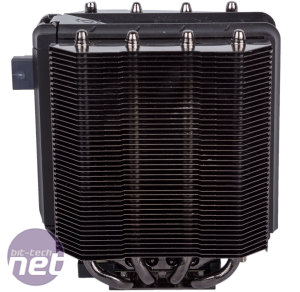
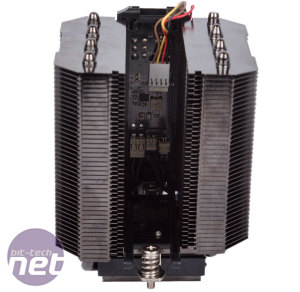
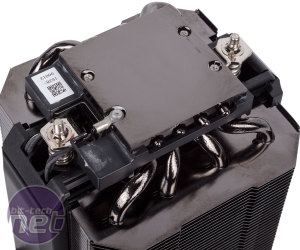
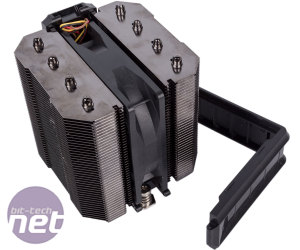
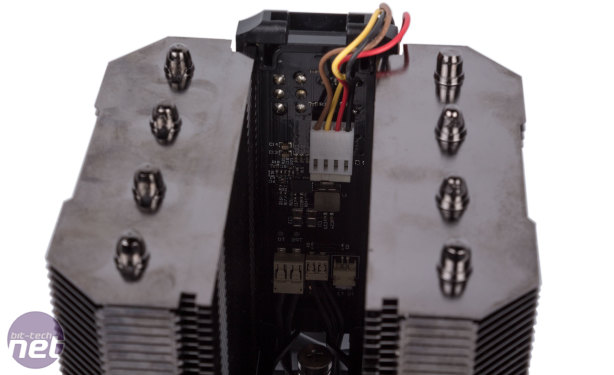
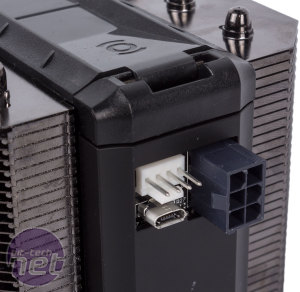
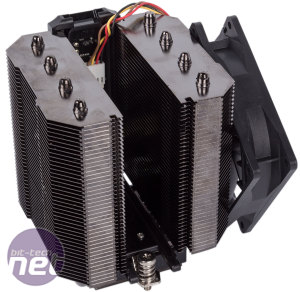
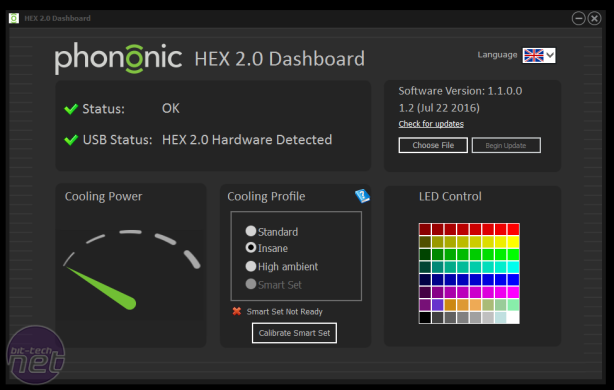







Want to comment? Please log in.